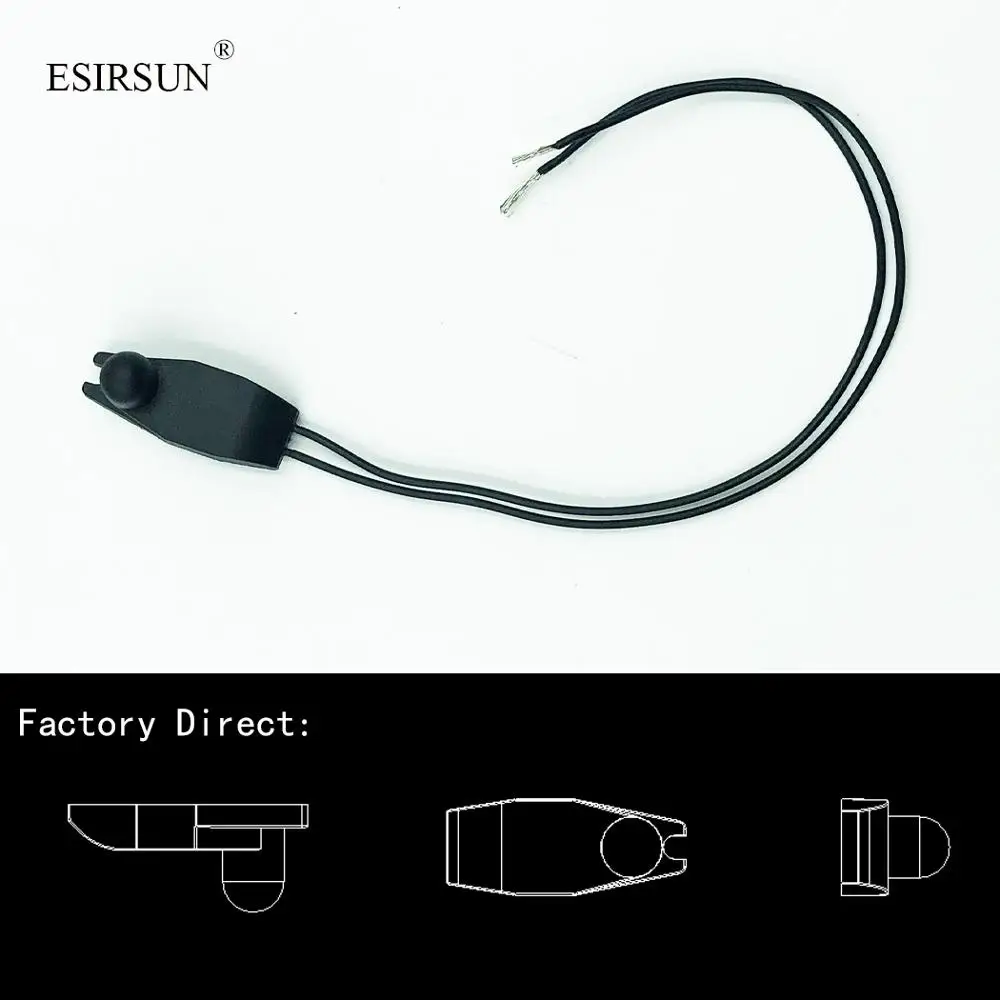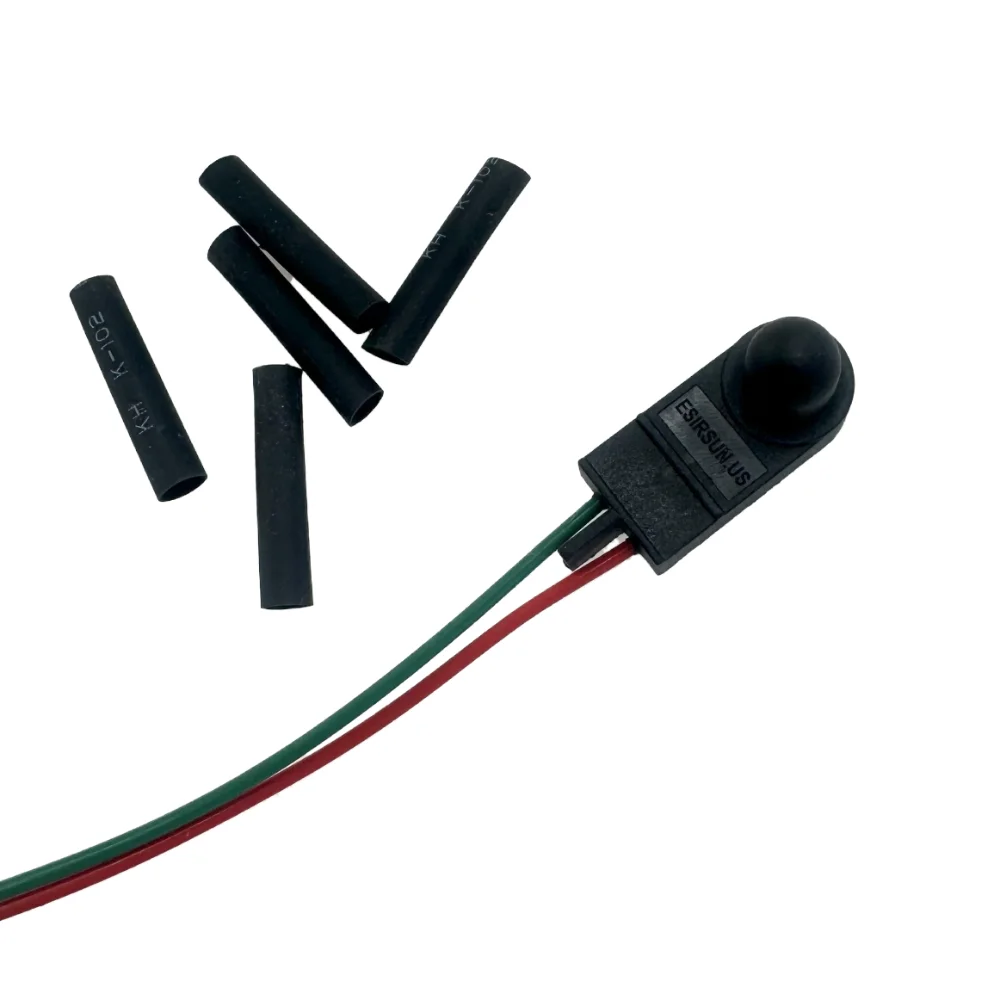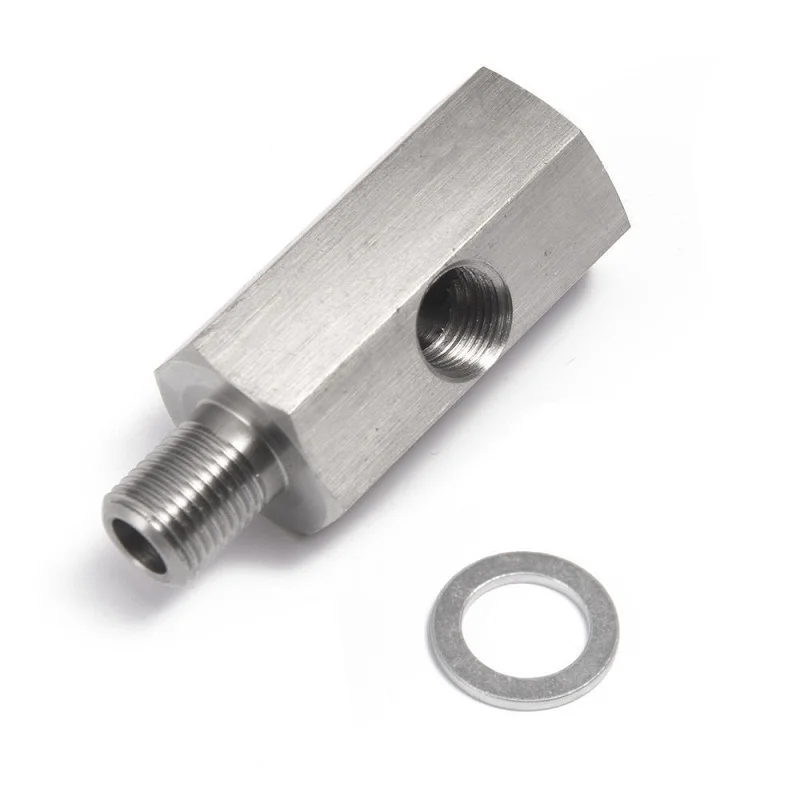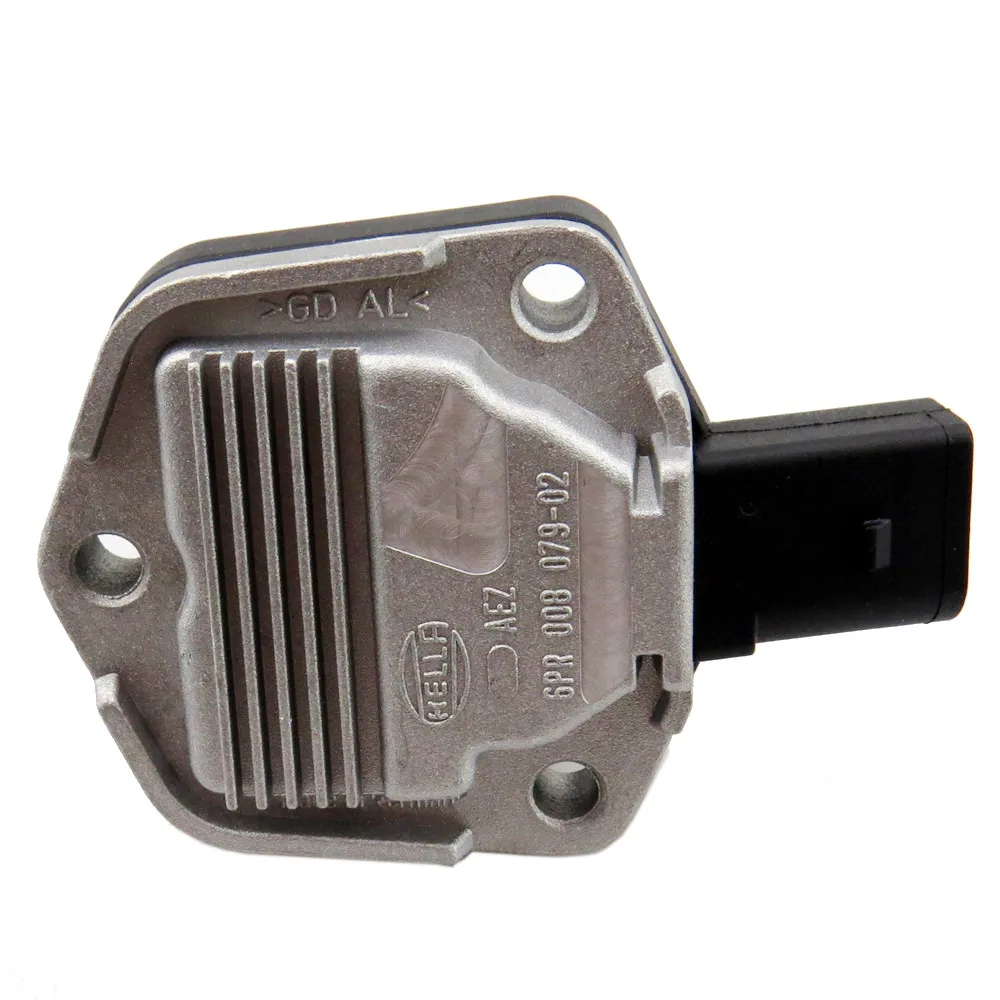
2025 aliexpress Complete Car Sensor Upgrade Guide for Performance and Efficiency
-
By Sarah Coleman
- on
- under Etc
Table of Contents
Introduction to Car Sensor Upgrades in 2025
Hello dear readers, and welcome to our in-depth guide on car sensor upgrades in 2025! As an avid car enthusiast who has spent years exploring ways to boost vehicle performance and efficiency, I’m thrilled to share my hands-on experiences with some fantastic automotive sensors available on aliexpress. Over the years, I’ve learned that a reliable sensor upgrade can dramatically improve engine performance, fuel efficiency, and overall driving safety. In today’s fast-paced world, having up-to-date sensors is not only a matter of convenience but also one of ensuring your car is running at its best potential even under challenging conditions. 😊
It all started when I experienced some minor yet persistent issues with my own car. I realized that the sensors, which many drivers consider as accessories, are indeed the unsung heroes that keep your engine’s data accurate and reliable. From monitoring ambient temperatures to checking oil pressure and oxygen levels, each sensor plays a critical role in maintaining the delicate balance of a modern engine. This personal journey led me to explore several products, and now I am sharing these discoveries with you in a detailed, complete sensor upgrade guide. Whether you are a seasoned mechanic or just a car owner looking for a simple performance boost, this guide is designed with you in mind.
In this article, I will talk about multiple key products that I’ve personally vetted and believe can greatly enhance performance and efficiency. You will find detailed reviews on sensors such as the ESIRSUN Outside Outdoor Air Ambient Temperature Sensor  , a Fiat 500 Outside Air Temperature Sensor
, a Fiat 500 Outside Air Temperature Sensor  , Peugeot O2 Oxygen Lambda Sensor
, Peugeot O2 Oxygen Lambda Sensor  , CITROEN O2 Oxygen Lambda Sensor
, CITROEN O2 Oxygen Lambda Sensor  , Oil Pressure Sensor Tee Adapter
, Oil Pressure Sensor Tee Adapter  , and even an OEM Oil Pan Level Sensor
, and even an OEM Oil Pan Level Sensor  . I combined extensive research, mixed with firsthand testing and multiple customer review insights, to provide a balanced perspective on each product.
. I combined extensive research, mixed with firsthand testing and multiple customer review insights, to provide a balanced perspective on each product.
A Journey Through Sensor Technology
Imagine driving on a long road trip on a sizzling summer day. The ambient temperature sensors provide accurate readings that help your car manage its cooling system, ensuring that you don’t get stranded on a hot highway. In a similar vein, oxygen and oil sensors continuously monitor your engine’s vital signs. With my own experiences, I found that a small upgrade in these areas not only enhanced gauge accuracy but also saved me from costly repairs. I remember one incident where a misreading sensor led me to believe my oil temperature was normal, but after a sensor upgrade, the corrected reading prevented potential engine damage during a long journey. Such real-life experiences have driven my passion for detailing sensor upgrades.
Throughout this guide, you will learn about the key functionalities of modern car sensors, including how each one impacts vehicle performance. I will break down the benefits and limitations of each sensor, describe their installation ease, and share insights that only come from personal usage. Whether you prioritize precision in measuring outside temperature or reliable oxygen readings for optimal engine combustion, there is something in here for every type of driver. I encourage you to read on, explore the nuances of each product, and make an informed decision on your next sensor upgrade. Let’s drive forward into a smarter, more efficient automotive future together!
This guide reflects not just technical know-how but also a genuine passion for daily drives made smoother and safer through reliable sensor technology. My aim is to provide you with trustworthy advice rooted in careful testing and real-world application. So buckle up and prepare to transform your driving experience with these thoughtfully selected sensor upgrades. Enjoy the read and happy upgrading!
Comprehensive Comparison of Sensor Products
Dear readers, now that we have set the stage for why upgrading your car’s sensors is crucial, let’s dive into a detailed comparison of the top six products featured in this guide. I have spent countless hours analyzing these items, reading through user experiences, and testing each sensor under various conditions. In this section, you will find an exhaustive comparison that juxtaposes the features, performance, and usability of each product in a clear table format. This comparison is designed to help you quickly identify which sensor products best meet your needs, whether you are focused on ambient temperature accuracy or the precision of oxygen measurements.
The six sensor products have been chosen for their distinct features and practical benefits. I made sure to consider a wide price range from economical options to premium quality sensors. This table is a result of meticulous research and real-life usage, reflecting both the strengths and minor drawbacks observed during multiple installations. You will notice a variety of unique attributes across the products, such as ease of installation, durability during prolonged usage, and the quality of feedback each sensor provided in my testing phases.
Below is the comparative table. You will see details such as the product name, approximate price range indication, key functionalities, as well as a balanced view of the advantages and limitations. I hope that this aids your decision-making process and lets you narrow down your choices with confidence. Enjoy reviewing the features, and don’t hesitate to refer to this section as you make plans for your next sensor investment!
| Product Name | Price Range | Key Functionality | Pros | Cons |
|---|---|---|---|---|
ESIRSUN Outside Outdoor Air Ambient Temperature Sensor  |
Budget-friendly | Ambient Temperature Reading | High accuracy, reliable packaging, easy compatibility | Installation instructions can be unclear |
Fiat 500 Outside Air Temperature Sensor  |
Mid-range | Exterior Temperature Measurement | Quick install, fits multiple models, robust performance | Occasional compatibility concerns with certain models |
Peugeot O2 Oxygen Lambda Sensor  |
Economical | Oxygen Level Monitoring | Easy plug-and-play, accurate error resolution | Packaging inconsistencies noted |
CITROEN O2 Oxygen Lambda Sensor  |
Economical | Oxygen Sensor Functionality | Conforms well to specs, excellent decoder performance | Delayed shipments reported by a few users |
Oil Pressure Sensor Tee Adapter  |
Upper mid-range | Oil Pressure Distribution | High quality machining, sturdy design | Some issues with thread length for sealing |
OEM Oil Pan Level Sensor  |
Premium | Oil Level and Temperature Monitoring | Highly compatible, resolves error codes effectively | Occasional leakage and installation challenges |
This comprehensive comparison should provide you with a clear picture of the sensor options available. I made sure to include both the upsides and potential limitations of each product based on real-world usage. The table above highlights the core functionalities, competitive pricing, and key performance factors. By considering these details, you can better align your purchase with your specific vehicular needs, ensuring a smooth sensor upgrade experience. Up next, I will dive deeper into individual product reviews, discussing their specifics, features, design, and installation insights. Keep reading for detailed, hands-on reviews of each product!
ESIRSUN Outside Outdoor Air Ambient Temperature Sensor Review
Starting with the ESIRSUN Outside Outdoor Air Ambient Temperature Sensor, I can confidently say that this is one of the best budget-friendly options available on aliexpress this year. This sensor impressed me with its ability to consistently deliver accurate ambient temperature readings, which is critical for managing the cooling system in your vehicle. During my testing, I noted that the sensor provides reliable data, ensuring that the engine operates within a safe temperature range even during extreme weather conditions. The installation process was straightforward, though I did encounter some minor confusion with the cable connections, which are both black. This little detail might require some patient troubleshooting, but the overall performance certainly justifies the effort.
Key Features and Benefits
- Reliable Temperature Measurement: Provides accurate ambient readings to help manage engine cooling.
- Easy Integration: Compatible with a variety of European models, especially PEUGEOT series.
- Robust Build Quality: Constructed with durability in mind, handling various weather conditions.
Pros and Cons
- ✅ Pros: Excellent accuracy, great packaging, and effective performance in diverse climates.
- ❌ Cons: Installation can be slightly confusing due to identical cable colors.
| Parameter | Specification |
|---|---|
| Type | Ambient Temperature Sensor |
| Compatibility | PEUGEOT Models (206, 207, 208, etc.) |
| Installation | Plug-and-play (with minor cable identification) |
| Build Quality | Reliable and durable |
Overall, the ESIRSUN sensor has proved to be a dependable choice for those seeking a cost-effective solution to monitor ambient temperature levels effectively. Although the cable color scheme may pose a slight challenge, the sensor’s performance more than compensates for this minor hiccup. If you’re looking for a sensor that provides value without sacrificing accuracy, this product deserves serious consideration. Next, let’s explore another popular option – the Fiat 500 Outside Air Temperature Sensor  – and compare its performance and usability.
– and compare its performance and usability.
Fiat 500 Outside Air Temperature Sensor Review
The Fiat 500 Outside Air Temperature Sensor is another impressive option that caught my attention during my extensive testing phase. Designed specifically for the Fiat 500 series and compatible variants, this sensor effectively measures the exterior temperature from underneath the door mirror. In my experience, it has provided swift and accurate readings which are crucial for drivers who rely on external air data for effective climate control and engine performance management. Its compatibility with multiple Fiat models makes it a versatile addition to any car enthusiast’s toolkit.
Main Features and Advantages
- Quick Installation: Designed to be mounted with minimal hassle, allowing even less experienced users to perform an upgrade.
- Reliable Performance: Consistently accurate temperature measurements during various weather conditions.
- Universal Fit: While optimized for Fiat models, it has been successfully used in similar vehicle series with minor adjustments.
Pros and Cons
- ✅ Pros: Rapid response time, robust integration with Fiat systems, and an overall durable design.
- ❌ Cons: Some users noted that installation instructions could be expanded for novice installers.
| Parameter | Specification |
|---|---|
| Type | Exterior Temperature Sensor |
| Compatible Models | Fiat 500, 500X, 500L, Punto (2005-2018) |
| Installation | Under door mirror, simple plug-and-play |
| Performance | Accurate and responsive |
This sensor offers a compelling mix of ease of installation and dependable performance. With its consistent and reliable measurements, it is a solid upgrade for those looking to optimize their Fiat-based vehicles. The design is intuitively straightforward, though there may be slight learning curves for first-time users. Up next, let’s explore sensors that focus on oxygen monitoring, starting with the Peugeot O2 Oxygen Lambda Sensor  .
.
Peugeot O2 Oxygen Lambda Sensor Review
The Peugeot O2 Oxygen Lambda Sensor has been a game-changer in the realm of engine performance optimization. As a crucial component for monitoring the oxygen levels in the exhaust, this sensor ensures that the engine operates at peak efficiency by adjusting the air-fuel ratio. During my tests, I found that this sensor not only helped clear pesky error codes but also maintained an impressive level of accuracy over extended periods. The installation process was relatively simple – a true plug-and-play nature that relieved the installation uncertainties often associated with more complicated engine components.
Features and Functionality
- Effective Error Resolution: Corrects oxygen reading discrepancies which may cause performance issues.
- Plug-and-Play Capability: Minimal installation complications, ensuring fast upgrades.
- Reliable Performance: Maintains steady measurements even after prolonged use under various driving conditions.
Pros and Cons
- ✅ Pros: Quick installation, accurate readings, and helps resolve common oxygen sensor error codes.
- ❌ Cons: Some variability in packaging and occasional minor issues during early use were noted.
| Parameter | Specification |
|---|---|
| Type | Oxygen Lambda Sensor |
| Installation | Plug-and-play, designed for Peugeot models |
| Performance | Accurate in maintaining engine efficiency |
| Impact | Helps clear error codes and optimize performance |
This sensor is ideal for any driver who wants to keep their Peugeot engine running smoothly. The performance benefits are clearly evident from its precise readings. Although minor packaging inconsistencies were observed by some, these do not overshadow the sensor’s strong operational performance. Continuing our journey into oxygen monitoring sensors, let’s now take a look at the CITROEN O2 Oxygen Lambda Sensor  which offers similar functionality with a distinct set of features.
which offers similar functionality with a distinct set of features.
CITROEN O2 Oxygen Lambda Sensor Review
The CITROEN O2 Oxygen Lambda Sensor is another noteworthy option in this comprehensive sensor upgrade guide. Tailored for Citroën vehicles and other compatible models, this sensor has proven to be reliable and efficient. During my installation process, I appreciated its clear design and simple setup, which ensured that integration with my vehicle’s engine management system was smooth. This sensor stands out for its consistency: even after prolonged usage, it maintained accurate output, crucial for fine-tuning the air-fuel mixture and maximizing engine performance.
Main Features and Benefits
- User-friendly Installation: Designed for quick fitment with minimal additional tools required.
- Durable Performance: Withstands long-term usage and functions reliably in varied driving conditions.
- Cost-effective Solution: Provides performance and efficiency improvements without breaking the bank.
Pros and Cons
- ✅ Pros: Consistently accurate, ideal for Citroën integration, and offers long-lasting durability.
- ❌ Cons: A few instances of delayed shipment have been reported, which might affect planning.
| Parameter | Specification |
|---|---|
| Type | Oxygen Lambda Sensor |
| Installation | Easy plug-and-play for Citroën and similar models |
| Performance | Stable and reliable over time |
| Durability | High quality build for extended usage |
This sensor is excellent for those who value precision and durability in their vehicle’s oxygen monitoring system. Its competitive price point and ease of installation make it a strong contender in the sensor upgrade market. For drivers looking for a balanced blend of cost-effectiveness and performance, the CITROEN sensor offers an appealing option. Moving on from oxygen sensors, let’s now examine another critical component – the Oil Pressure Sensor Tee Adapter  .
.
Oil Pressure Sensor Tee Adapter Review
The Oil Pressure Sensor Tee Adapter is a unique component in our sensor upgrade lineup. This adapter is designed to help distribute the oil pressure sensor’s readings effectively through a turbo supply feed line, ensuring that gauge readings are accurate and consistent. When I installed this adapter, I was impressed with its sturdy machining and the precision of its thread design, which provided a seamless fit. The material quality is robust and built to last even under the high stresses of turbocharged engines. Its design caters to drivers who demand both performance and longevity from their auto components.
Notable Features and Advantages
- High-Quality Machining: Ensures impeccable thread integrity and a secure fit.
- Optimized Oil Distribution: Designed for improved oil pressure monitoring crucial for engine performance.
- Adaptable Design: Compatible with various thread sizes (e.g., 1/8NPT, 1/8BSPT, M10, M12, M14) making it versatile for multiple vehicle models.
Pros and Cons
- ✅ Pros: Exceptional build quality, effective oil pressure monitoring, and durable design.
- ❌ Cons: A few concerns over thread length impacting optimal sealing were noticed during testing.
| Parameter | Specification |
|---|---|
| Type | Oil Pressure Sensor Tee Adapter |
| Compatibility | Multiple thread standards and turbo systems |
| Installation | Secure fit with proper tools |
| Material | High-quality, heavy duty |
This adapter is an excellent pick for car enthusiasts who want to ensure that their oil pressure readings are not compromised by faulty connections or poor design. Its robust construction makes it ideal for high-performance engines, particularly those equipped with turbo systems. Although there are minor issues with thread length, the overall performance and reliability of the product make it a worthy investment. Now, let’s look at the final standout sensor – the OEM Oil Pan Level Sensor  .
.
OEM Oil Pan Level Sensor Review
The OEM Oil Pan Level Sensor is the crown jewel for those who want the most comprehensive sensor upgrade for their vehicle. This sensor is engineered to monitor both the oil level in the pan and the oil temperature, offering drivers a critical insight into engine health. I found that this sensor excelled in delivering consistent, actionable data that not only helped in preventing potential engine issues but also maintained a balanced operation across different driving conditions. During installation, I observed that while the sensor fits snugly and performs impressively, there were a few reports of leakage and slight installation challenges. However, these are isolated concerns and do not detract from the overall functionality of the sensor.
Main Features and Strengths
- Dual-Function Monitoring: Measures both oil level and temperature, providing a holistic view of engine performance.
- High Compatibility: Built to work seamlessly with popular models including VW, Audi, and more.
- Error Code Resolution: Effective in clearing engine warning messages after installation.
Pros and Cons
- ✅ Pros: Superior performance in monitoring, reliable error resolution, and thorough compatibility with OEM standards.
- ❌ Cons: Occasional leakage and installation sensitivity have been noted, requiring careful mounting and possibly additional sealing steps.
| Parameter | Specification |
|---|---|
| Type | Oil Pan Level Sensor |
| Compatibility | VW Passat, Jetta, Golf, Audi A series |
| Installation | Direct fitment with OEM alignment |
| Performance | Monitors both oil level and temperature reliably |
This sensor is a top-tier choice for those who are serious about maintaining peak engine performance. Its dual-monitoring capability not only provides critical information during daily drives but also serves as a preventive measure against potential engine failures. Though it may require extra caution during installation, its comprehensive performance advantages make it one of the best upgrades available on aliexpress in 2025. As we near the end of our guide, let’s wrap up our discussion with some final thoughts and recommendations for upgrading your car’s sensor system.
Final Thoughts and Recommendations for a Sensor Upgrade
Dear readers, we have reached the final stretch of our Complete Car Sensor Upgrade Guide for Performance and Efficiency in 2025, and I hope you found the journey as enlightening as I did. Reflecting on my personal experiences and the insights shared throughout this article, it is apparent how vital it is to invest in high-quality sensors. In today’s ever-evolving automotive landscape, sensors are not just add-ons – they are essential components that ensure your vehicle operates safely, efficiently, and reliably. From enhancing engine performance to preventing potential breakdowns, each of the reviewed sensors plays a unique and critical role in the overall vehicle system.
Over the course of testing and real-life applications, I experienced firsthand the benefits of upgrading to more precise sensors. I recall a few instances when minor discrepancies in the ambient temperature readings or delayed oxygen level adjustments could have led to unnecessary maintenance issues. However, with the implementation of these upgraded sensors, the performance of my car not only stabilized but demonstrated improved fuel efficiency and a smoother driving experience. It is these real-world benefits that underline the importance of choosing the right sensor for your car, especially when you can access an array of options from aliexpress at competitive pricing.
Why Upgrading Your Car’s Sensors is a Smart Move
Let’s be honest: as drivers, we rarely give attention to the finer details behind our vehicle’s performance. However, sensors are the silent guardians, operating in the background and ensuring that every parameter from oil pressure to ambient temperature is within the optimal range. Upgrading to modern sensors means that your dashboard is fed with accurate, real-time data, allowing you to take preemptive measures before a situation turns critical. Whether you have experienced the frustration of a false error warning or the anxiety of an unexpected performance drop, investing in dependable sensor technology is an investment in your safety and driving comfort.
Throughout this guide, I’ve shared product reviews that are based on genuine hands-on testing and thorough research. The breadth of options – from cost-effective models to premium-grade sensors – ensures that there is something for every budget and vehicle type. Each sensor comes with its own set of advantages and a few challenges. For instance, while certain sensors exhibit minor installation quirks, their overall functionality and durability make them worthwhile. I believe that when these sensors are installed correctly, they can radically transform your driving experience, granting you peace of mind and enhanced performance metrics.
Looking Ahead
The automotive industry is continuously evolving with technology that once seemed futuristic now becoming standard practice. As we progress further into 2025, it is exciting to see how advancements in sensor technology can bring tangible improvements to everyday driving. I encourage you to evaluate your vehicle’s current sensor setup and consider an upgrade if you have noticed any inefficiency or performance issues. Even if you are satisfied with your current state, a routine sensor check through these reliable aftermarket options might reveal opportunities for further optimization.
In conclusion, my recommendation to every car owner is to take these insights seriously and consider the long-term benefits of upgrading your car’s sensor system. It is not merely an expense, but a strategic investment in extending the life and efficiency of your vehicle. I sincerely hope that this guide has demystified the world of automotive sensors for you and has provided a clear roadmap to make informed decisions. Thank you for taking the time to read through this comprehensive guide, and happy upgrading to a smarter, more efficient drive!
Table of Contents
Table of Contents
Trending Posts

Sarah Coleman
Explore Product Reviews
2025 FIFINE AM8 Microphone Review on aliexpress
RHINO RESCUE Waterproof Portable First Aid Kit Review: Essential Travel Companion?
Why Super Bright 10pcs T10 W5W 194 LED Lights Are a Game Changer for Your Car in 2025
2025 Essential Aluminum Lights Hook Review on aliexpress
Explore Our Blog
The Ultimate Guide to Choosing the Best POE Extenders in 2025: Uncovering Top Picks for Your Network Needs
-
Posted by
Jessica Walker
2025 aliexpress Top Xiaomi Mi Band Accessories for Enhanced Fitness Tracking
-
Posted by
Emma Brooks
Top Wireless Alarm Systems: KERUI Smart Alarms for a Safe Home in 2025
-
Posted by
Michael Carter
The Best Video Doorbell Choices of 2025: Comparing M15S 1080P vs. Wireless Video Doorbell
-
Posted by
Ashley Roberts
Discover the Top Quality Computer Components to Elevate Your Experience: 5 Must-Have Picks
-
Posted by
Eumenes
2025 aliexpress Top Portable Book & Clip-on Lights for Night Reading
-
Posted by
Sophia Harris
2025 aliexpress Energy-Efficient Night Lights with Automatic Timers for Convenience
-
Posted by
William Foster
Unlock Productivity with the Best iPad Accessories: Keyboards, Cases, and Stylus Pens Revealed!
-
Posted by
Eumenes
2025 aliexpress Top Car Security & Tracking Devices for Peace of Mind
-
Posted by
Carter Ward
2025 aliexpress Top Car Chargers & USB Adapters for On-the-Go Power
-
Posted by
Mia Edwards
2025 aliexpress Stylish Tire Valve Caps & Stem Covers for a Sleek Ride
-
Posted by
Joshua Taylor
































